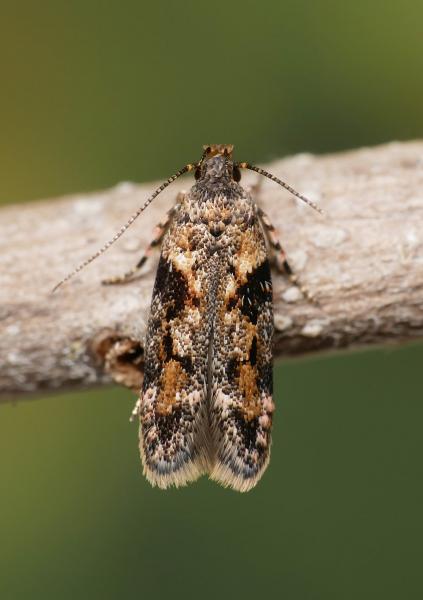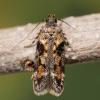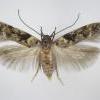35.135 Caryocolum proxima (Haworth, 1828)
Status and Distribution
Rare and apparently declining, with all recent records (post 1989) from central, eastern and south eastern England and only reported from three sites since 2000. Historically it appeared to be more widespread with reports from parts of south-west, western and northern England. However, the accuracy of some of these records is in doubt due to potential confusion with other species.

Provisional map
Foodplant and Larval Feeding Signs
Cerastium fontanum (common mouse-ear), see plant distribution map, and Stellaria media (common chickweed).
Within lightly spun shoots and seed heads.
Habitat
Open grassland bordering hedgerows, weedy banks, parkland and gardens.
Finding the Moth
Larva: from late April to early July in an inconspicuous spinning in a shoot or within a seed capsule spun to the lower leaf with a little silk - difficult to spot.
Adult: may be found resting on tree trunks, occasionally flies in late afternoon, flies at night and comes to light.
Similar Species
Can be confused with C. junctella, C. alsinella, C. viscariella and C. blandulella but is best recognised by the usually pinkish (sometimes whitish) scales on the tibia of the forelegs and especially of the mid-legs. This feature is otherwise only shared with C. junctella which usually has many white-tipped scales along the dorsum (trailing edge) of the forewing and the black costal block is less prominent. Retention of a voucher specimen is recommended should this species be suspected. The male genitalia are similar to C. blandella and the female genitalia to C. blandulella.
Single brooded from mid-July to the end of August.
Earliest: 6th July 1964 (VC25) - a few earlier records require confirmation or may refer to bred specimens.
Latest: 2nd September 1963 (VC20)



